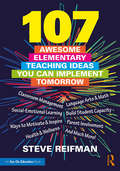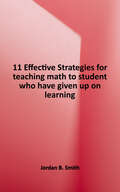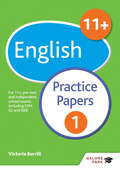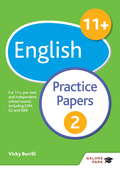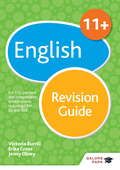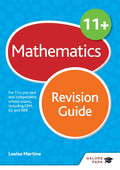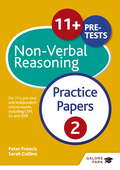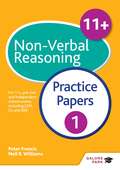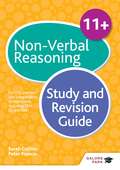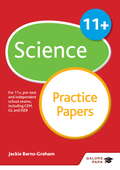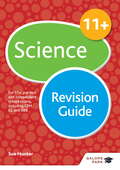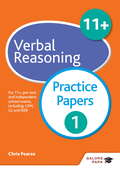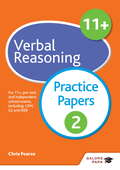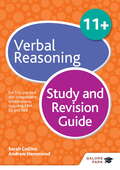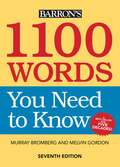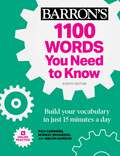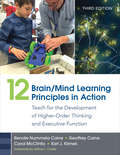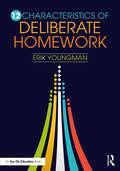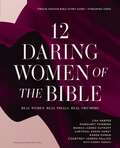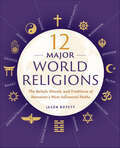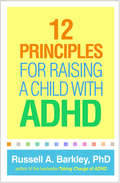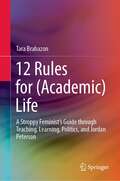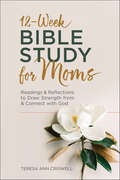- Table View
- List View
107 Awesome Elementary Teaching Ideas You Can Implement Tomorrow
by Steve Reifman107 Awesome Elementary Teaching Ideas You Can Implement Tomorrow contains a wide variety of effective, user-friendly strategies, tips, and activities for your elementary school classroom. Rich with anecdotes and examples, this resource features useful suggestions for creating a positive, cooperative classroom culture, improving academic instruction, and building student capacity. Specific topics include classroom management, social-emotional learning, language arts and math ideas, motivation and inspiration, family involvement, movement and mindfulness, and much more. You will also find printable pages, photographs, diagrams, and other helpful visual aids. <p><p>Bonus: The book’s classroom-ready templates are also provided on our website as free eResources for ease of use.
10th Economics - karnataka board
by Karnataka Patya Pustakalaya10th standard kannada medium Economics Text book
11 Effective Strategies for Teaching Math to Students Who Have Given Up on Learning
by Jordan B. SmithAs a special needs teacher, your time is already limited. From meetings to paperwork, there is little time left for actual teaching. Do you really have time to do more? These 11 strategies aren’t about doing more. It’s about getting the most out of your students most effectively and practically. They will enable students to develop a deep love of math and skills they can take with them for other subjects and into adulthood. No matter the level of despondency among your students, "11 Effective Strategies for Teaching Math to Students Who Have Given Up on Learning" equips you with the tools to revitalize your passion for math. Turn your classroom into a dynamic hub of exploration and discovery, and witness the joy of learning rekindled among your students. If you're ready to transform your math teaching journey and empower every student to succeed, this book adds to your collection of math teaching books.
11+ English Practice Papers 1: For 11+, pre-test and independent school exams including CEM, GL and ISEB
by Victoria BurrillExam Board: ISEBLevel: 11 PlusSubject: EnglishFirst Teaching: September 2012First Exam: Autumn 2013Practice papers to test pupils ahead of pre-tests and 11 plus independent school entrance exams. Includes six model papers, each containing a comprehension and a writing paper that includes a total of 67 comprehension questions and 12 writing tasks. - Develops and perfects exam technique for all major pre-tests and 11 plus independent school exams including Consortium, CEM, GL and ISEB- Teaches pupils to improve their response rates with timed papers- A variety of exam paper styles to build exam-room confidence- Identifies weaker areas and improves results with detailed answers and commentary- Builds familiarity of the way short-format 11 plus tests are presentedThe brand new 11 plus and pre-test range has been constructed to help pupils follow a three step revision journey ..Step 1) 11 Plus English Revision GuideStep 2) Practice Papers11 Plus English Practice Papers 111 Plus English Practice Papers 2Step 3) WorkbooksSpelling and Vocabulary Workbook Age 8-10 Reading and Comprehension Workbook Age 9-11 Grammar and Punctuation Workbook Age 8-10 Writing Workbook Age 9-11
11+ English Practice Papers 2: For 11+, pre-test and independent school exams including CEM, GL and ISEB
by Victoria BurrillExam Board: ISEBLevel: 11 PlusSubject: EnglishFirst Teaching: September 2012First Exam: Autumn 2013Following on from Practice Papers 1, these papers further test pupils in preparation for the most challenging of pre-tests and 11 plus independent school entrance exams. Includes six model papers, each containing a comprehension and a writing paper that include a total of 104 comprehension questions, 31 spelling, grammar and punctuation questions and 15 writing tasks. - Develops and perfects exam technique for all major pre-tests and 11 plus independent school exams including Consortium, CEM, GL and ISEB- Teaches pupils to improve their response rates with timed papers- A variety of exam paper styles to build exam-room confidence- Identifies weaker areas and improves results with detailed answers and commentary- Builds familiarity of the way long-format 11 plus tests are presented- Tackles comprehension questions to make pupils think closely about the textThe brand new 11 plus and pre-test range has been constructed to help pupils follow a three step revision journey ..Step 1) 11 Plus English Revision GuideStep 2) Practice Papers11 Plus English Practice Papers 111 Plus English Practice Papers 2Step 3) WorkbooksSpelling and Vocabulary Workbook Age 8-10 Reading and Comprehension Workbook Age 9-11 Grammar and Punctuation Workbook Age 8-10 Writing Workbook Age 9-11
11+ English Revision Guide: For 11+, pre-test and independent school exams including CEM, GL and ISEB
by Victoria Burrill Jenny Olney Erika CrossExam Board: ISEBLevel: 11 PlusSubject: EnglishFirst Teaching: September 2012First Exam: Autumn 2013Secure the top marks in 11 plus independent school entrance exams and pre-tests and a better chance at getting into their school of choice with this essential revision guide. Complete coverage of the ISEB 11 Plus English syllabus and stretching extra content ensures that every topic is thoroughly revised ahead of the exams.- This book covers everything required for the 11 Plus English exam- Prepares pupils for a wide range of independent school exams and pre-tests with challenging extension material- Consolidates revision with all the key information in one place- Features helpful insight in to the exams, with examples, practical tips and advice- Tests understanding and technique with timed, levelled exam-style questions- Identifies strengths and weaknesses using 11 plus sample tests with detailed answer guidanceAlso available for 11 Plus English preparation: - Spelling & Vocabulary Workbook 9-11 9781471829642- Reading & Comprehension Workbook 9-11 9781471829659- Grammar & Punctuation Workbook 9-11 9781471829666- Writing Workbook 9-11 9781471829673- 11 Plus English Practice Papers ISBN 9781471849275Revision Guides, Workbooks and Practice Papers are also available for Maths, Science, Verbal Reasoning and Non-Verbal Reasoning on www.galorepark.co.uk.
11+ Maths Revision Guide: For 11+, pre-test and independent school exams including CEM, GL and ISEB
by Louise MartineExam Board: ISEBLevel: 11 PlusSubject: MathsFirst Teaching: September 2015First Exam: Autumn 2016Secure the top marks in 11 plus independent school entrance exams and Pre-Tests leading to a better chance at getting into the school of choice with this essential revision guide. Complete coverage of the ISEB 11 Plus Maths syllabus and stretching extra content ensures that every topic is thoroughly revised ahead of the exams.This book covers everything required for the 11 Plus Maths exam- Prepares pupils for a wide range of independent school exams and pre-tests with challenging extension material- Consolidates revision with all the key information in one place- Features helpful insight in to the exams, with examples, practical tips and advice- Tests understanding and technique with timed, levelled exam-style questionsAlso available for 11 Plus Maths preparation: - 10-Minute Maths Tests Workbook Age 8-10 9781471829611- 10-Minute Maths Tests Workbook Age 9-11 9781471829635- Mental Arithmetic Workbook Age 8-10 9781471829505- Mental Arithmetic Workbook Age 9-11 9781471829628Revision Guides, Workbooks and Practice Papers are also available for English, Science, Verbal Reasoning and Non-Verbal Reasoning on www.galorepark.co.uk
11+ Non-Verbal Reasoning Practice Papers 2: For 11+, pre-test and independent school exams including CEM, GL and ISEB
by Peter Francis Sarah CollinsPrepare for the most challenging of pre-tests and 11+ independent school entrance exams with six levelled exam papers designed to test pupils' skills in Non-Verbal Reasoning exams for a better chance at getting into their school of choice. - Develops and perfects exam technique for all major pre-test and 11+ independent school exams including CEM, GL and ISEB- Features levelled papers to help build skills for the top marks - Teaches pupils to improve their response rates with timed papers- Builds exam-room confidence by practising with a variety of exam paper styles- Identifies weaker areas and improves results with detailed answers and commentaryAlso available for 11+ Non-Verbal Reasoning preparation: · 11+ Non-Verbal Reasoning Revision Guide ISBN xxx· Non-Verbal Reasoning Workbook Age 8-10 ISBN xxx· Non-Verbal Reasoning Workbook Age 9-11 ISBN xxx· Non-Verbal Reasoning Workbook Age 10-12 ISBN xx Revision Guides, Workbooks and Practice Papers are also available for Maths, English, Science and Verbal Reasoning on www.galorepark.co.uk.
11+ Non-Verbal Reasoning Practice Papers 1: For 11+, pre-test and independent school exams including CEM, GL and ISEB
by Peter Francis Sarah Collins Neil R WilliamsExam Board: ISEBLevel: 11 PlusSubject: Non-Verbal ReasoningFirst Teaching: September 2016First Exam: Spring 2017Practice exam papers to prepare children for the most challenging of pre-tests and 11 plus independent school entrance exams. Includes 9 levelled exam papers that will test pupils' skills in Non-Verbal Reasoning.- Develops exam techniques tested in all major pre-tests and 11 plus independent school examinations including CEM, GL and ISEB- Features papers written to measured levels of difficulty to help build skills- Teaches pupils to improve their response rates with timed papers- Builds exam-room confidence by practicing with a variety of exam paper styles- Identifies weaker areas and improves results with detailed answers and commentaryAlso available for 11 Plus Non-Verbal Reasoning preparation: - 11 Plus Non-Verbal Reasoning Revision Guide- Non-Verbal Reasoning Workbook Age 8-10- Non-Verbal Reasoning Workbook Age 9-11- Non-Verbal Reasoning Workbook Age 10-12
11+ Non-Verbal Reasoning Study and Revision Guide: For 11+, pre-test and independent school exams including CEM, GL and ISEB
by Peter Francis Sarah CollinsExam Board: ISEBLevel: 11 PlusSubject: Non-Verbal ReasoningFirst Teaching: September 2016First Exam: Spring 2017Secure the top marks in 11 plus independent school entrance exams and pre-tests and a better chance at getting into their school of choice with this essential study and revision guide. Stretching content ensures that all the Non-Verbal Reasoning skills are thoroughly revised ahead of the exams.- Explains and tests the full range of question types and skills met in Non-Verbal Reasoning in exams- Prepares pupils for a wide range of independent school exams and pre-tests with challenging extension material- Builds on existing knowledge with clear cross-curricular links to English- Features helpful insight in to the exams, with examples, practical tips and advice- Prepares pupils for exam conditions with timed and levelled exam-style questions- Identifies strengths and weaknesses using 11 plus sample tests with detailed answer guidanceAlso available for 11 Plus Verbal Reasoning preparation: - Non-Verbal Reasoning Workbook Age 8-10 - Non-Verbal Reasoning Workbook Age 9-11 - Non Verbal Reasoning Workbook Age 10-12 - 11+ Non- Verbal Reasoning Practice Papers 1&2Revision Guides, Workbooks and Practice Papers are also available for Maths, English, Science and Verbal Reasoning on www.galorepark.co.uk
11+ Science Practice Papers: For 11+, pre-test and independent school exams including CEM, GL and ISEB
by Jackie Barns-GrahamExam Board: ISEBLevel: 11 PlusSubject: ScienceFirst Teaching: September 2015First Exam: Autumn 2018Prepare for the most challenging of pre-tests and 11 plus independent school entrance exams with five levelled exam papers designed to test pupils' ability across all Science topics for a better chance at getting into their school of choice.- Develops and perfects exam technique for all major pre-test and 11 plus independent school exams including ISEB- Features levelled papers to help build skills for the top marks - Teaches pupils to improve their response rates with timed papers- Builds exam-room confidence by practising with a variety of exam paper styles- Identifies weaker areas and improves results with detailed answers and commentary- Prepares pupils for what they will face on exam day with a mock testAlso available for 11 Plus Science preparation: - 11 Plus Science Revision Guide ISBN 9781471849237Revision Guides, Workbooks and Practice Papers are also available for Maths, English, Verbal Reasoning and Non-Verbal Reasoning on www.galorepark.co.uk
11+ Science Revision Guide: For 11+, pre-test and independent school exams including CEM, GL and ISEB
by Sue HunterExam Board: ISEBLevel: 11 PlusSubject: ScienceFirst Teaching: September 2015First Exam: Autumn 2018Secure the top marks in 11 plus independent school entrance exams and pre-tests and a better chance at getting into their school of choice with this essential revision guide. Complete coverage of the ISEB 11 Plus Science syllabus and stretching extra content ensures that every topic is thoroughly revised ahead of the exams.- This book covers everything required for the 11 Plus Science exam- Prepares pupils for a wide range of independent school exams and pre-tests with challenging extension material- Consolidates revision with all the key information in one place- Features helpful insight in to the exams, with examples, practical tips and advice- Tests understanding and technique with timed, levelled exam-style questionsAlso available for 11 Plus Science preparation: - 11 Plus Science Practice Papers ISBN 9781471849282Revision Guides, Workbooks and Practice Papers are also available for English, Maths, Verbal Reasoning and Non-Verbal Reasoning on www.galorepark.co.uk.
11+ Verbal Reasoning Practice Papers 1: For 11+, pre-test and independent school exams including CEM, GL and ISEB
by Chris PearseExam Board: ISEBLevel: 11 PlusSubject: Verbal ReasoningFirst Teaching: September 2016First Exam: Spring 2017Practice exam papers to prepare children for the most challenging pre-tests and 11 plus independent school entrance exams. Practice Papers 1 includes ten levelled exam papers that will test pupils' skills in verbal reasoning for a better chance of getting into the school of choice.- Develops exam techniques tested in all major pre-tests and 11 plus independent school examinations including CEM, GL and ISEB- Features papers written to measured levels of difficulty to build ability- Teaches pupils to improve their response rates with timed papers- Builds exam-room confidence with practice in a variety of exam styles- Identifies weaker areas and improved results with detailed answers and commentary- Timed papers 1-4 build familiarisation of test conditions- Questions 5-8 are designed to increased speed, which is good practice for pre-test and CEM 11 plus- Questions 9-1- are long-style tests - perfect practice for GLThe brand new for 2016 11 plus and pre-test range has been constructed to help pupils follow a three step revision journey ..Step 1) 11 Plus Verbal Reasoning Study and Revision GuideStep 2) Practice Papers11 Plus Verbal Reasoning Practice Papers 111 Plus Verbal Reasoning Practice Papers 2Step 3) Workbooks11 Plus Verbal Reasoning Workbook Age 8-10 11 Plus Verbal Reasoning Workbook Age 9-11 11 Plus Verbal Reasoning Workbook Age 10-12
11+ Verbal Reasoning Practice Papers 2: For 11+, pre-test and independent school exams including CEM, GL and ISEB
by Chris PearseExam Board: ISEBLevel: 11 PlusSubject: Verbal ReasoningFirst Teaching: September 2016First Exam: Spring 2017Practice exam papers to prepare children for the most challenging pre-tests and 11 plus independent school entrance exams. Practice Papers 2 includes eight levelled exam papers that will test pupils' skills in verbal reasoning for a better chance of getting into the school of choice.- Develops exam techniques tested in all major pre-tests and 11 plus independent school examinations including CEM, GL and ISEB- Features papers written to measured levels of difficulty to build ability- Teaches pupils to improve their response rates with timed papers- Builds exam-room confidence with practice in a variety of exam styles- Identifies weaker areas and improved results with detailed answers and commentary- Varied in length tests build in difficulty The brand new for 2016 11 plus and pre-test range has been constructed to help pupils follow a three step revision journey ..Step 1) 11 Plus Verbal Reasoning Study and Revision GuideStep 2) Practice Papers11 Plus Verbal Reasoning Practice Papers 111 Plus Verbal Reasoning Practice Papers 2Step 3) Workbooks11 Plus Verbal Reasoning Workbook Age 8-10 11 Plus Verbal Reasoning Workbook Age 9-11 11 Plus Verbal Reasoning Workbook Age 10-12
11+ Verbal Reasoning Study and Revision Guide: For 11+, pre-test and independent school exams including CEM, GL and ISEB
by Andrew Hammond Sarah CollinsExam Board: ISEBLevel: 11 PlusSubject: Verbal ReasoningFirst Teaching: September 2016First Exam: Spring 2017An essential study and revision guide to help children secure top marks in pre-tests and 11 plus independent school entrance examinations. The stretching content ensure that verbal reasoning skills are thoroughly reviewed ahead of the exams.- Prepares pupils for all major pre-tests and 11 plus independent school examinations including CEM, GL and ISEB- Explains and tests all of the question types that pupils could face- Features helpful insight into the exams, with practical tips and advice- Identifies strengths and weaknesses using 11 plus sample tests with detailed answer guidance- Clear links between Verbal Reasoning and existing study of English- Includes topics such as constructing words, understanding word meaning, working with numbers and algebra, and developing logic skillsThe brand new for 2016 11 plus and pre-test range has been constructed to help pupils follow a three step revision journey ..Step 1) 11 Plus Verbal Reasoning Study and Revision GuideStep 2) Practice Papers11 Plus Verbal Reasoning Practice Papers 111 Plus Verbal Reasoning Practice Papers 2Step 3) Workbooks11 Plus Verbal Reasoning Workbook Age 8-10 11 Plus Verbal Reasoning Workbook Age 9-11 11 Plus Verbal Reasoning Workbook Age 10-12
1100 Words You Need to Know
by Melvin Gordon Murray BrombertA Barron's best-seller for more than five decades!This brand-new edition of 1100 Words You Need to Know has been expanded and updated, and includes:Word lists and definitionsAnalogy exercisesWords-in-context exercisesIdiom indexesAn updated Pronunciation GuideAll new words for students to learn are placed in the context of sentences that have been selected from well-known novels, plays, poems, newspaper editorials, and TV broadcasts. For optimal ease and enjoyment in learning, the authors recommend 15-minute sessions with this book. Over the years, thousands of students preparing for the SAT and ACT have relied on previous editions of 1100 Words You Need to Know as an ideal way to strengthen their word power. A new feature in this edition is indexes of idioms, which appear throughout the book.
1100 Words You Need to Know + Online Practice: Build Your Vocabulary in just 15 minutes a day!
by Murray Bromberg Melvin Gordon Rich CarrieroEnhance your vocabulary in just 15 minutes a day with 1100 Words You Need to Know. Relied on by students for 50 years! Over the years, thousands of students preparing for the SAT, ACT, GRE, and other standardized tests have relied on 1100 Words You Need to Know as an ideal way to strengthen their word power. With this brand-new edition, test prep expert Richard Carriero provides a fully updated and invaluable resource for students—or for anyone who wants to boost their vocabulary. 1100 Words You Need to Know features a weekly program with six words to learn each day and one day for review. With just 15 minutes a day, you&’ll learn everything you need to improve your reading, writing, and speaking skills.This fully revised edition includes:Word lists with definitions in all new thematic grouping Helpful tips on word rootsUpdated words in context exercises, activities, and quizzes throughout An updated pronunciation guideOnline PracticeContinue your practice with 3 online quizzes plus scoring to test your progress
12 Brain/Mind Learning Principles in Action: Teach for the Development of Higher-Order Thinking and Executive Function
by Karl J. Klimek Renate Nummela Caine Mr Geoffrey Caine Carol Lynn McClinticRaise the bar with the best of what is known about how the brain/mind learns Higher-order skills such as critical thinking, planning, decision-making and persistence are the key to success for today’s students. Fully revised to respond to the Common Core and other timely developments, this indispensable guide builds the bridge from brain research to classroom practice. The updated third edition offers More strategies to deeply engage students and build foundational learning skills Guidance on peer-based professional development through Process Learning Circles Reflective questions and checklists for assessing progress Updated, real-life examples Bridge research to practice through these innovative strategies to create a school environment where students and faculty learn and thrive.
12 Brain/Mind Learning Principles in Action: Teach for the Development of Higher-Order Thinking and Executive Function
by Karl J. Klimek Renate Nummela Caine Mr Geoffrey Caine Carol Lynn McClinticRaise the bar with the best of what is known about how the brain/mind learns Higher-order skills such as critical thinking, planning, decision-making and persistence are the key to success for today’s students. Fully revised to respond to the Common Core and other timely developments, this indispensable guide builds the bridge from brain research to classroom practice. The updated third edition offers More strategies to deeply engage students and build foundational learning skills Guidance on peer-based professional development through Process Learning Circles Reflective questions and checklists for assessing progress Updated, real-life examples Bridge research to practice through these innovative strategies to create a school environment where students and faculty learn and thrive.
12 Characteristics of Deliberate Homework
by Erik YoungmanLearn how to assign homework that truly enhances learning and isn't just busywork. This important book defines what deliberate homework looks like and provides relevant, actionable suggestions to guide your homework decisions. You'll uncover how to think through these 12 characteristics of homework: • reasonable completion time • the right level of complexity • appropriate frequency • serves a specific purpose • aligns with learning targets • guided by a learning mindset • contains a thoughtful format • fits the learning sequence • communicated clearly • followed by feedback • uses grades to guide progress • implementation is consistent For each feature, the author includes strategies and tools appropriate for all grade levels. The book also includes self-assessments and reflective questions so you can work on the book independently or with colleagues in professional development sessions.
12 Daring Women of the Bible Study Guide plus Streaming Video: Real Women, Real Trials, Real Triumphs
by Lisa Harper Margaret Feinberg Karen Ehman Bianca Juarez Olthoff Chrystal Evans Hurst Courtney Joseph FallickIn this twelve-session video Bible study, some of today's best-loved Christian authors and speakers look at the spiritual lessons learned from twelve daring women in the Bible and what they mean for you today.As you look at each of these women&’s lives, you will discover how to:Apply biblical lessons to your own modern-day struggles.Live through your failures as well as your successes.Draw near to God in a world filled with trials.Find lasting contentment in every situation.Overcome rejection and insecurity . . . and much more.You&’ll study the lives of . . .Shulamite Woman: We Had God at Hello (Lisa Harper) Deborah: Fight Like a Girl (Bianca Juarez Olthoff)Proverbs 31 Woman: How Not to Do It All (Karen Ehman)Ruth: Staying Focused in a World of Distractions (Chrystal Evans Hurst)Puah and Shiphrah: How to Fight Your Fears (Margaret Feinberg)Esther: Letting God Be in Control (Courtney Joseph)Priscilla: Living a Life of Blessed Ordinary (Karen Ehman)Mary and Martha: Finding Life in Death (Bianca Juarez Olthoff)Bent Woman: We've Got God's Complete Attention (Lisa Harper)Woman with the Issue of Blood: When Persistence Pays Off (Chrystal Evans Hurst)Elizabeth: How to Win the Waiting Game (Margaret Feinberg)Anna: How to Live a Life Devoted to God (Courtney Joseph Fallick)This study guide includes:Individual access to twelve streaming video sessionsBackground information on each womanVideo notes and a comprehensive structure for small group discussion timePersonal study and reflection materials for in-between sessionsGroup leader helps Previously published as Twelve More Women of the Bible.
12 Major World Religions: The Beliefs, Rituals, and Traditions of Humanity's Most Influential Faiths
by Jason BoyettFor billions of people, having a religious belief system provides purpose in life. For some, religion serves as a guide for moral behavior. Today's world is one in which our understanding of world religions is both understatedly important, as well as increasingly complex.After many years exploring the foundations of various world religions, Jason Boyett has written this comprehensive, easy-to-understand exploration of the twelve major world religions through a meticulous, yet unbiased lens. 12 Major World Religions offers an impartial look at where each of these belief systems intersects, how they differ, and why some have been—or are currently—misunderstood.
12 Principles for Raising a Child with ADHD
by Russell A. BarkleyOver decades of research and work with thousands of families, Russell A. Barkley has become a leading authority on attention-deficit/hyperactivity disorder (ADHD) in kids and teens. He has learned what a huge difference parents can make in supporting their children's success--as well as how overwhelming it can be. This concise guide presents 12 key parenting principles for dealing with common behavioral, emotional, and school challenges. By cultivating a mindset of acceptance and compassion--together with an understanding of the executive function deficits of ADHD--you can strengthen your loving connection with your child and help your whole family thrive. Filled with practical suggestions and quick-reference lists and tips, this is the perfect book to read cover to cover or pick up any time you need extra support.
12 Rules for (Academic) Life: A Stroppy Feminist’s Guide through Teaching, Learning, Politics, and Jordan Peterson
by Tara BrabazonThese are strange times. Climate crises. Health crises. Collapsing systems. Influencers. And yes - Jordan Peterson.We are currently living in a (Post) Peterson Paradigm. This book – 12 Rules for (Academic) Life - explores what has happened to teaching, learning and politics through this odd and chaotic intervention. Deploying feminism, this lens and theory offers a glass-sharpened view of this moment in international higher education. It is organized through twelve mantras for higher education in this interregnum, and offers new, radical, edgy and passionate methodologies, epistemologies and ontologies for a University sector searching for a purpose. This is a feminist book which targets a feminist audience, both inside and outside higher education. It presents a clear focus on how this Peterson moment can be managed and challenged, when in future such academics deploy social media in this way. This book is also a part of higher education studies, exploring the role of the public / critical / dissenting / organic intellectual in debates about the political economy, identity/politics and leadership.A question of our time – through a climate emergency, a pandemic and polarized politics – is why Professor Jordan Peterson gained profile and notoriety. The Jordan Peterson moment commenced in September 2016 with his YouTube video, “Professor against political correctness,” and concluded with his debate with Slavoj Zizek on April 19, 2019. From this moment, his credibility was dented, if not destroyed.Jordan Peterson infused scholarly debates with Punch and Judy extremism and misunderstandings. Instead, this book offers research rather than certainty, interpretation rather than dogma, evidence rather than opinion, and theory rather than ‘moral truth.’ The goal is to recalibrate this (Post) Peterson Paradigm, to take stock of how this moment occurred, and how to create a revision of higher education.
12-Week Bible Study for Moms: Readings & Reflections to Draw Strength from & Connect with God
by Teresa Ann CriswellFind strength in your faith as you navigate motherhood with this daily Bible study for womenBeing a mom is no easy feat, but turning to God can help you feel motivated, inspired, and ready for anything. This 12-week Bible study for moms helps you reconnect with His Word every day, with advice and teachings that support you through raising your family.The busy mom's Bible study—Each week focuses on a new theme like gratitude or perspective, with relevant passages from Scripture, focused prayers, and questions for reflection.Easy to use every day—This Bible workbook for women explores readings that offer deep insight but only take about 15 minutes, so you can always find time for them in your busy life.Start today—All you need to use this Bible study guide is your Bible and something to write with. You'll even find a section of discussion topics to help you use this guide in a group!Practice parenting from a place of love and faith with this women's Bible workbook.
